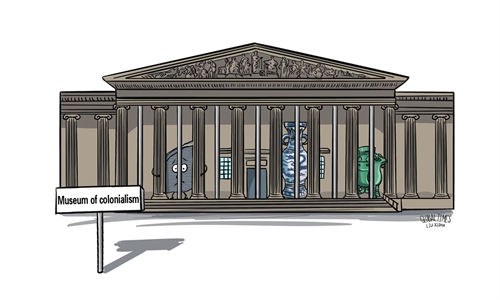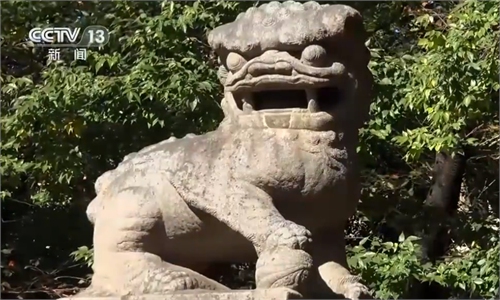ARTS / CULTURE & LEISURE
Voices rise, resonate among countries for return of relics from British Museum
Calling from home
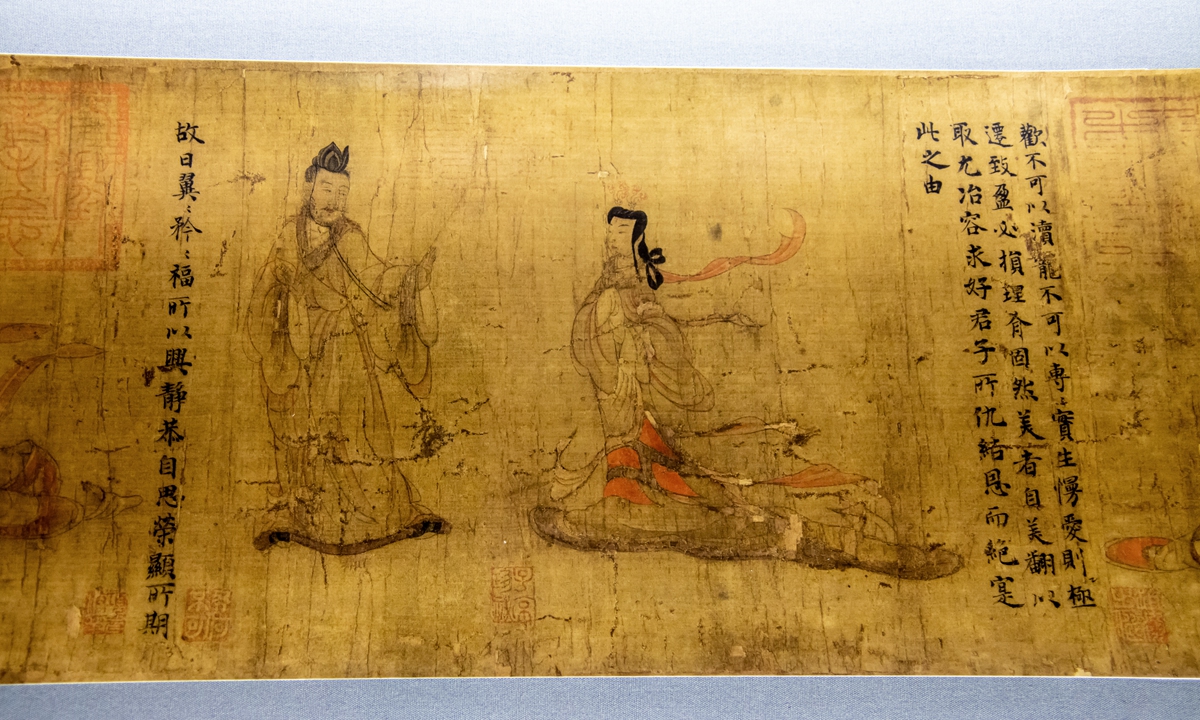
Part of the Admonitions of the Instructress to the Court Ladies collected by the British Museum Photo: VCG
The embers of a scandal implicating some of the UK's top art and historical artifact institutions, in which approximately 2,000 items in the British Museum's possession are unaccounted for, keep igniting blazes of public debate in China as of Tuesday, a comparison with the news that Swiss cultural authorities recently repatriated five lost Chinese cultural relics.
On Tuesday, Chinese Foreign Ministry Spokesperson Wang Wenbin expressed China's appreciation for the Swiss cultural authorities' repatriation of five lost cultural relics at a press briefing. "This marks another successful practice in cultural heritage protection cooperation between the two countries, contributes to deepening mutual understanding and friendship between the two peoples, and sets a fine example of combating cultural relics smuggling, ensuring the safety of cultural relics and expanding inter-governmental cooperation globally," Wang said.
The voices calling for the British Museum to return looted relics have become an international consensus in countries like Nigeria, Greece and Egypt.
Meanwhile, Monday's Global Times Editorial piece questioning the British Museum's attitudes toward the repatriation of looted Chinese cultural relics keeps receiving resonance on Chinese social media, where the hashtag "British Museum must return Chinese cultural relics for free" had accumulated over 1 billion views on Sina Weibo as of press time.
Over the years, one argument made in defense of looted artifacts remaining in the custody of the British Museum is they are "better protected," more so than they would be in their respective countries of origin.
The huge loopholes in the management and security of cultural objects in the British Museum exposed by this scandal have led to the collapse of a long-standing and widely circulated claim that "foreign cultural objects are better protected in the British Museum."
Netizens on Chinese social media platforms debunked the claim of safety with some providing video evidence of rife negligence at the British institution.
"You can clearly see the management loopholes as you walk in [the British Museum]," a student at a UK art school told the Global Times on Tuesday, adding that she witnessed a man accidentally breach the "staff only" area, and despite an alarm being sounded, no security personnel materialized.
In the meantime, "its catalogue of 23,000 items from China, ranging from ancient bronzes and jades to paintings and ceramics, has been in a controversy of challenged ownership [[which are believed to be looted from China since the latter half of 19th century]," Lu Xinran, a Beijing-based cultural expert, told the Global Times.
The relics that 'escaped'
On Tuesday, a short video chronicling the "escape" of a cultural relic from British Museum and the people that "she" meets along the way went viral on Sina Weibo, further fueling the debate on relic repatriation.
The story's main protagonist is a jade vessel, just one relic among tens of thousands Chinese cultural relics hoarded by the British Museum.
"For more than a century since the Opium War (1840-42), a large number of national treasures and cultural relics were looted, and have since been exiled in foreign countries. Several of these historical events marked the peak of the loss of Chinese cultural relics including the British and French allied forces' looting of the Old Summer Palace in Beijing, the destruction of the Mogao Grottoes in Dunhuang in Northwest China's Gansu Province, and the loss of the oracles," Lu told the Global Times.
Among them, the reproduction of the Admonitions of the Instructress to the Court Ladies, which is only displayed publicly on a regular basis, is considered a masterpiece of Chinese painting and a milestone in Chinese art history.
The original scroll, attributed to Gu Kaizhi, a painter from the Eastern Jin Dynasty (317-420), depicts scenes from a moralizing poem that instructs women on how to behave virtuously.
The reproduction, dated back to the Tang Dynasty (618-907), is one of the earliest surviving copies of the scroll and shows remarkable skill and elegance in its execution. The scroll was acquired by the British Museum in 1903 from a private collector, who claimed that it was given to him by a Chinese official.
However, some scholars have argued that the scroll was likely taken from China during the Second Opium War (1856-60), when British troops looted and burned many imperial palaces and temples in China.
Another is the set of Percival David Collection, porcelain vases from the Qing Dynasty (1644-1911), also counted as part of the most notorious collection which consists of more than 1,700 pieces of porcelain representing one of the finest collections of Chinese ceramics in the world.
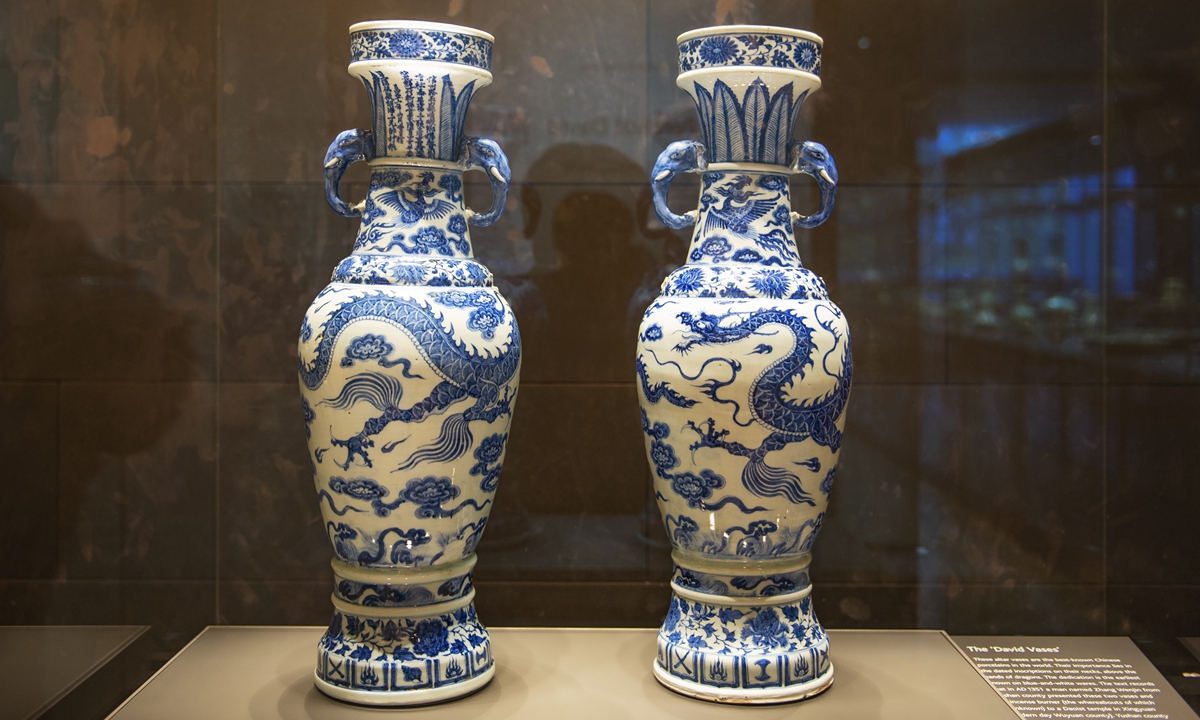
Chinese porcelain vases collected by the British Museum Photo: VCG
The collection was amassed by Sir Percival David, a British businessman and collector who lived in China for many years. The collection was donated to the British Museum in 1950 by David's foundation, which stipulated that it should be kept intact and displayed separately from other Chinese artifacts.However, some critics have argued that David obtained many of his pieces through dubious or illegal means, such as bribing officials, smuggling goods or exploiting China's weak laws on cultural heritage protection.
The trend
Riddled with security lapses and suspected of internal theft, the British Museum, with a history spanning over 270 years, has shocked public opinion not only domestically but also internationally. Some British media outlets like the Daily Mail have even termed the theft scandal as a "national embarrassment."
But the trending of calling for cultural relic repatriation is not just to the UK, but to the global community to reconsider the ethics of cultural property and historical accountability. In the wake of the latest theft scandal, multiple nations have staged protests, demanding for the return of their national treasures, notable among them being Nigeria, Greece, and Egypt.
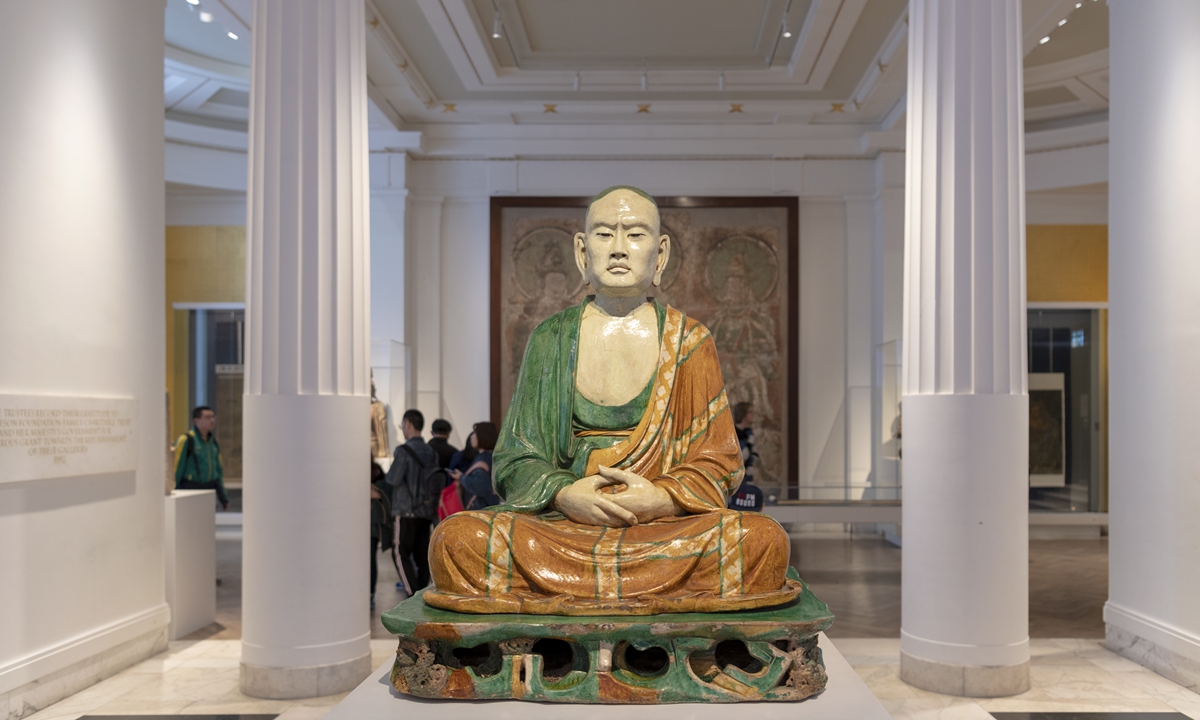
A Chinese Buddhist statue collected by the British Museum Photo: VCG
"China was not the only country to suffer from the looting of cultural relics. Since the colonial period after the 17th century, cultural relics from colonized countries have been plundered massively," said Lu.According to the UNESCO's public data in 2006, there were as many as 1.64 million Chinese cultural relics lost (not counting the cultural relics likely 10 times more that are in private collections in various countries), which were collected by 47 museums in the world, and the British Museum is the largest collector.
"I see no reason why it [the British Museum] should not return [the relics], as they are part of the original countries' national treasure," a Gen Zer working as a volunteer at the British Museum, told the Global Times on Tuesday after theft occurred.
